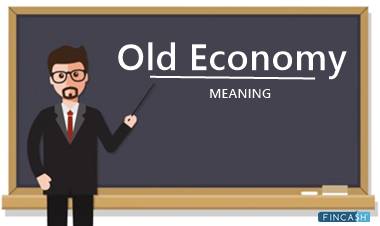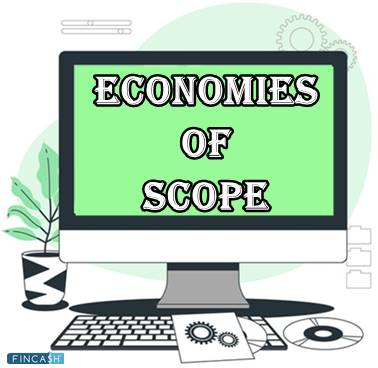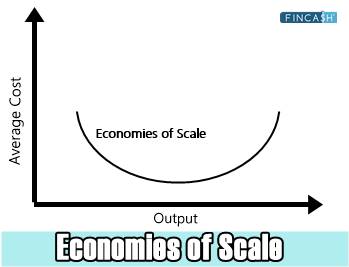What is the Old Economy?
An old Economy is an economy or collection of industries that do not rely on technology or technological development. It can also be referred to as the 20th century and 19th century economy when Manufacturing and agriculture dominated.

The blue-chip sector had significant expansion in the early twentieth century as industrialisation spread worldwide and made up the old economy. Today's high-tech enterprises are part of the new economy, and things have changed since its entrance. However, traditional businesses are still expanding at a considerably slower rate.
Examples of Old Economy
Examples of old economy businesses are as follow:
- Horse farms
- Bread baking
- Gardening
- Steel manufacturing
- Agriculture
For hundreds of years, their core mechanisms have remained virtually unchanged. Technology has aided in communication and equipment development in these industries, but the core operations involved remain substantially the same as a century ago.
Old Economic Policy
Indian economic policy is critical in deciding different government financial measures. Depending on India's monetary policy, the government sets various measures, such as budget preparation, interest rate setting, etc. The economic policy also impacts national ownership, the labour Market, and a variety of other economic sectors where government action is essential.
Before 1991, India's economic policy was heavily influenced by the colonial experience and the fabian-socialistic perspective. The policy was protectionist in nature, with a concentration on industrialisation, Import-substitution, corporate regulation, state interference in labour and financial markets, and central planning.
Old Economy Stocks
Old economy stocks are often categorised as value stocks, which are noted for their comparatively low Volatility, stable profitability, consistent returns, dividends for Income, and consistent streams of cash flow. Many investors associate the term "blue chip" with old economy stocks.
The Industrial Revolution was a time of product creation and production Efficiency. As a result, old economy stocks were the market's top leaders, increasing over time to provide the groundwork for the industrial and manufactured goods sectors. Ford, 3M, and Procter & Gamble are some of the most famous old economy stocks.
Talk to our investment specialist
Old Economy vs New Economy
The old economy contrasts with the new economy as it depends on traditional business methods rather than harnessing cutting-edge technology. Here are some of the fundamental differences between the two economies.
| Basis | Old Economy | New Economy |
|---|---|---|
| Meaning | An economic system is based on commodity exchange through social relationship | An economic system based on high growth industries with cutting edge technology |
| Key Factor | Open for all | Rich in talent and ideas |
| Success | Fixed competitive advantage in some resource or skill | Ability to learn and adapt |
| Focus | Companies | Educated people |
| Global Opportunities | Not crucial | Very crucial |
| Economic Development | Supervised by government | Partnerships with the private, public, and nonprofit sectors to drive change |
| Environmental Factors | Not important | Very important |
| Dependency | Manufacturing reliant on fossil fuels | Communications intensive but energy savvy |
| Focus Sector | Manufacturing sector | Diversified sectors |
| Human Capital | Production oriented | Customer focussed |
| Employment Nature | Stable | Risk and opportunity |
| Production Structure | Mass production | Full-time, flexible manufacturing |
| Organisational Structure | Hierarchical bureaucratic | Network |
| Examples | Steel, manufacturing, and agriculture | Google (Alphabet), Amazon, and Meta |
Traditional Economic Measures
While there are other ways to quantify economic development, Gross Domestic Product (GDP) is the traditional, most well-known and commonly tracked and reported indicator. It indicates the average wealth of the population.
GDP is the natural extension of gauging Economic Growth in terms of monetary expenditures. In addition to GDP, the Consumer Price Index (CPI), which measures pricing power and Inflation, and the Monthly Unemployment report, which includes weekly non-farm payrolls, are two of the most important metrics of economic growth.
The Bottom Line
In the old economy, individuals or local leaders make economic decisions. Since traditional economies rarely create extra commodities and are often less populous, there is less of a need for centralised planning. Local leaders can influence community decision-making, but not to the extent that a developed country's central Bank can. While the old economy continues to embrace new technology, many hurdles may prevent established institutions from progressing further. However, in order to match current needs and ignite production, businesses must swiftly replace existing techniques with new technology.
All efforts have been made to ensure the information provided here is accurate. However, no guarantees are made regarding correctness of data. Please verify with scheme information document before making any investment.












